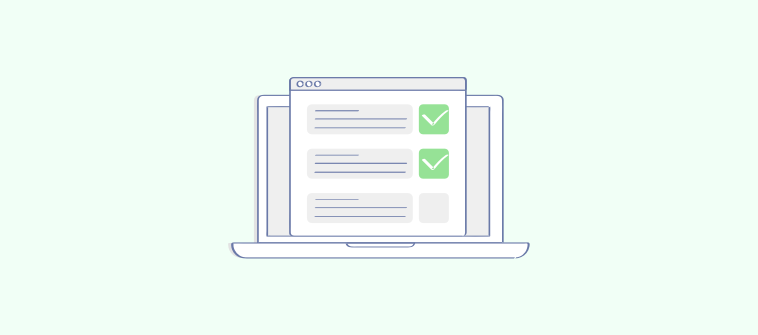Have you ever wondered if there’s a better way to measure someone’s true skills?
Performance assessments might be the solution you’re looking for.
Instead of relying on traditional exams, these assessments evaluate how well individuals perform real-world tasks. For educators, trainers, and certification providers, this means gaining a clearer, more accurate understanding of someone’s abilities. Curious about how performance-based assessments work and why they’re so effective? Let’s explore them and see how they can transform your approach to evaluating skills.
What Is a Performance Assessment?
A performance assessment is an evaluative approach that requires individuals to perform tasks or activities that demonstrate their knowledge, skills, and competencies in a practical context.
These assessments measure how well individuals can apply what they’ve learned in real-world scenarios. This method is crucial across various fields, including education, corporate training, hiring, and professional certification programs.
By focusing on practical application, performance assessments provide a more accurate and comprehensive evaluation of an individual’s abilities, ensuring they are well-prepared to tackle real-world challenges.
Watch: How to Create an Assessment Online
Why Is Performance Assessment Important?
Here’s why performance assessments are indispensable for businesses and other organizations:
- Real-World Application
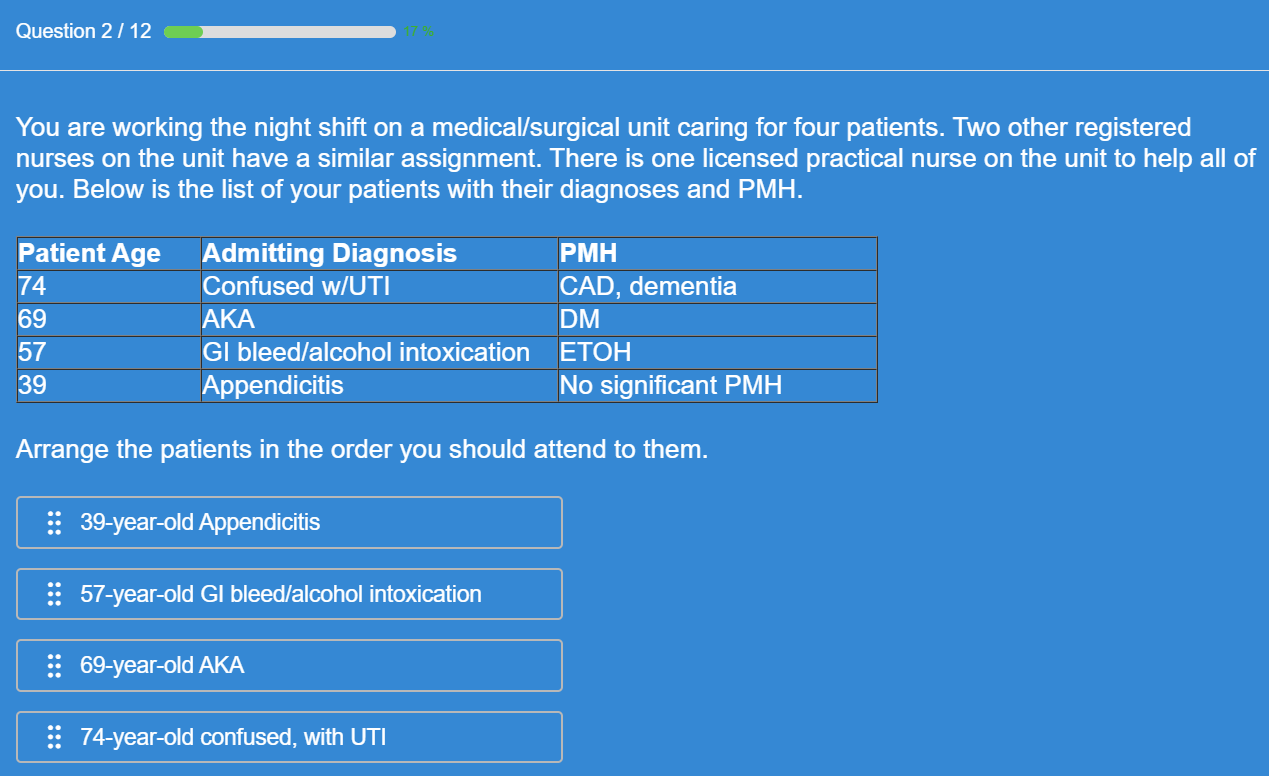
Performance assessments reflect an individual’s abilities by evaluating their performance in practical tasks rather than theoretical knowledge alone. This ensures individuals are ready to tackle real-world challenges effectively.
- Skill Development
These assessments help analyze skill gaps, enabling targeted training and development. By identifying areas of weakness, educators and trainers can provide focused support to enhance these skills.
Related Read: How to Create a Quiz Using AI
- Enhanced Learning
Focusing on practical application, performance assessments promote deeper understanding and retention. When individuals apply their learning in realistic scenarios, they are more likely to grasp and remember the material.
- Motivation & Engagement
Real-world tasks can be more motivating and engaging for learners, leading to better outcomes. When assessments are relevant and practical, individuals are more likely to be invested in their success.
Related Read: How to Engage Corporate Learners Through Online Courses
What Are the Types of Performance Assessments?
Understanding the types of performance assessments can help in selecting the right approach for your needs:
- Performance-Based Assessments
These involve presentations, role-playing, projects, and other activities requiring individuals to demonstrate their skills.
For example, a sales manager might assess a salesperson’s ability to pitch a product by facilitating a role-playing scenario through a video interview quiz.
- Peer Assessments
These involve team evaluations and peer reviews of employee performance, which provide valuable feedback from colleagues or fellow students. Peer assessments can offer diverse perspectives and promote collaborative learning.
- Self-Assessments
Self-assessments encourage individuals to reflect on their performance, set personal goals, and identify areas for improvement. They foster a sense of ownership and self-awareness, which are crucial for continuous personal growth.
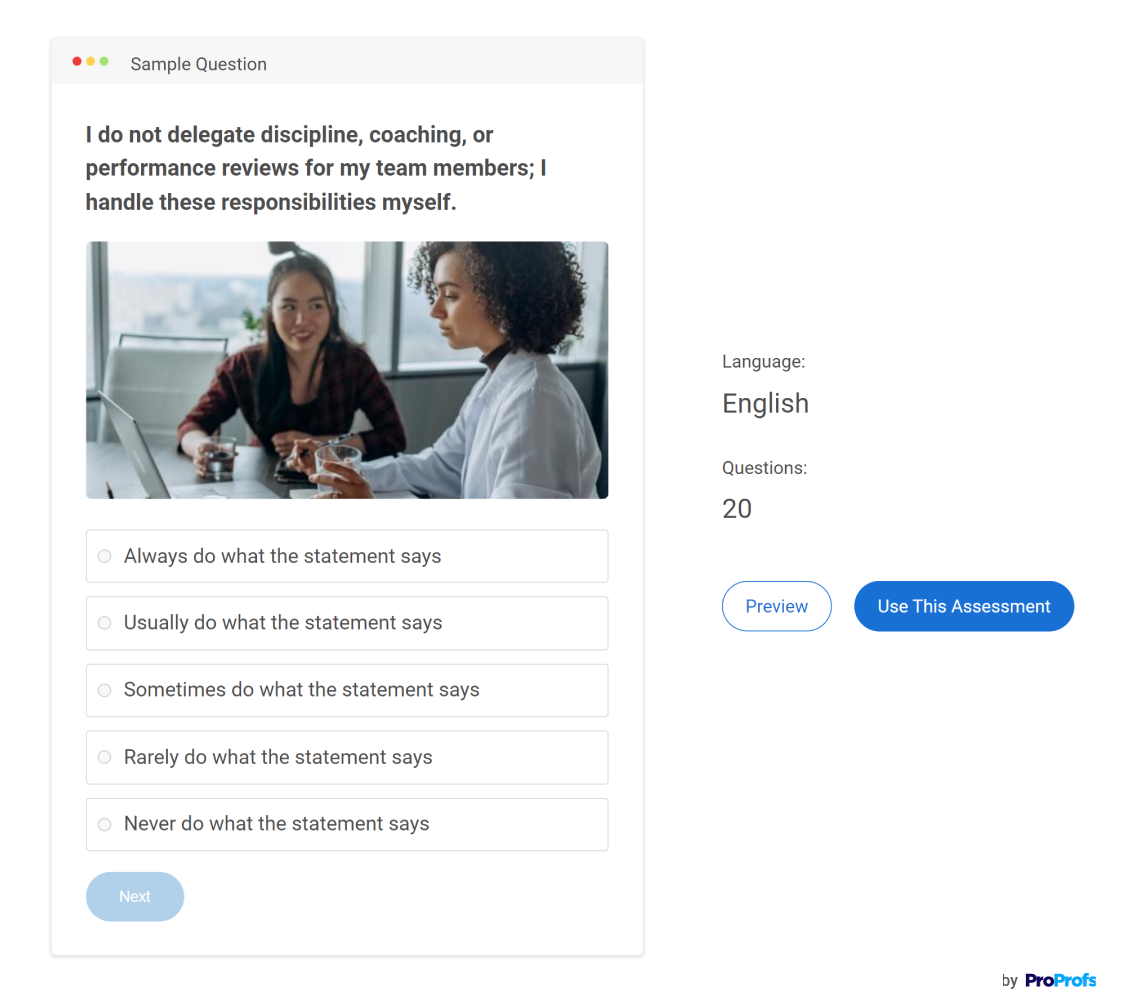
- Traditional Assessments
These include written exams and multiple-choice questions, which, while extremely valuable, may be less effective in evaluating practical skills. They are best used for testing knowledge, cognitive aptitude, judgment, and personality.
How Are Performance Assessments Used?
Performance assessments are widely used across various industries, each leveraging the unique benefits:
- Education
Teachers use performance assessments to evaluate students’ understanding and application of the curriculum. For instance, a science teacher might ask students to conduct an experiment and report their findings, demonstrating their grasp of scientific principles.
- Corporate Training
Businesses use training assessments to gauge employees’ competency and readiness for specific roles or tasks. For example, a customer service team might be assessed on their ability to handle difficult customer interactions through simulated scenarios.
- Creative Fields
Artists and designers are evaluated based on their ability to create and present their work. This might involve submitting portfolios or participating in live demonstrations, allowing for a comprehensive evaluation of their creative abilities.
- Healthcare
Medical professionals are assessed on their practical skills, such as patient care and surgical procedures. Performance assessments ensure that healthcare providers can deliver high-quality care, directly impacting patient outcomes.
Real-Life Success Story
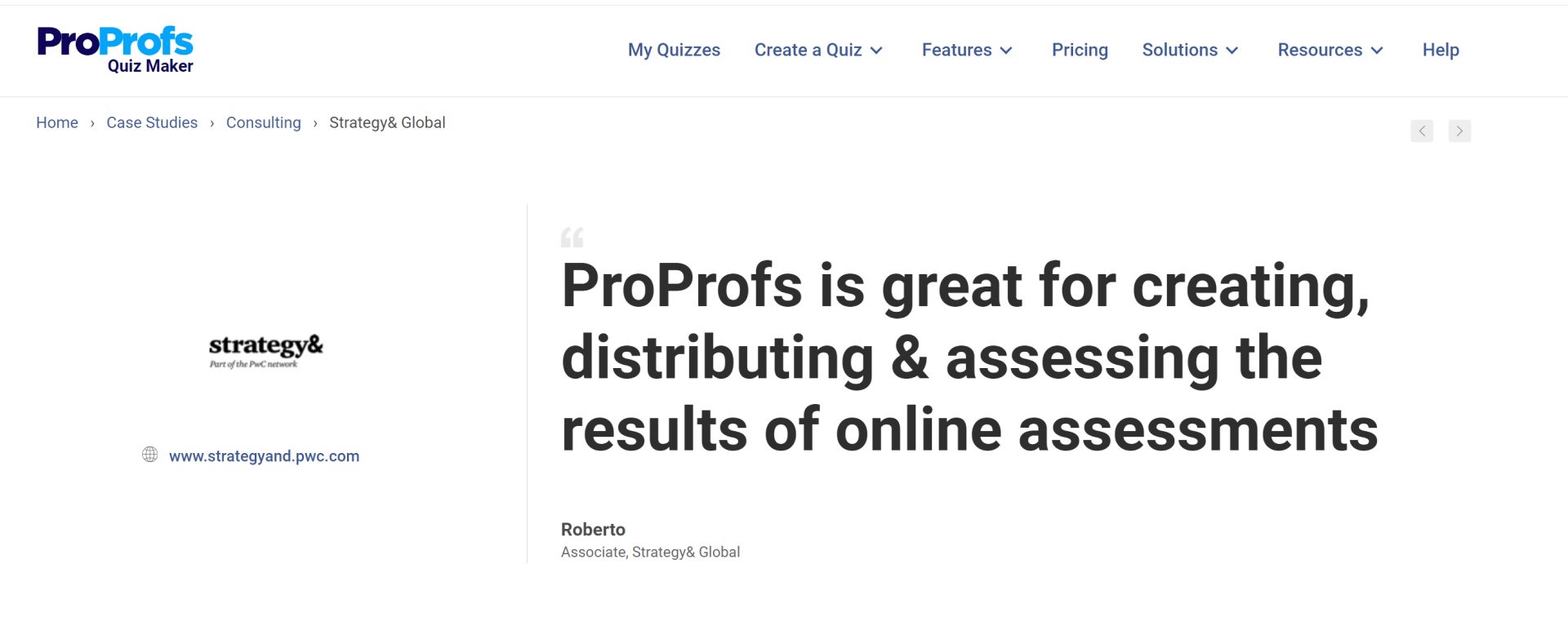
Criteria for Implementing Performance Assessments
Implementing performance assessments effectively requires careful planning and consideration. Here are four key criteria to ensure success:
- Clear Objectives
Define the specific skills and knowledge you aim to assess. Establish what you want to measure and why it’s important. Clear objectives help in designing tasks that accurately measure desired competencies.
- Measurable Criteria
Develop objective, measurable criteria that are aligned with the assessment goals. Use rubrics or scoring guides to ensure consistent and fair evaluations. These criteria should be specific enough to provide clear guidelines for both assessors and participants.
- Fairness & Consistency
Ensure the assessment process is fair and consistent for all participants. Standardize procedures and criteria across all assessments to avoid bias. This might involve training assessors to apply the criteria uniformly, ensuring that the same standards judge every participant.
- Confidentiality
Maintain the confidentiality of assessment results to ensure privacy and trust. This is especially important in corporate and educational settings involving sensitive information. Secure handling of data builds trust and encourages honest participation.
Tips to Conduct a Performance Assessment
Conducting a successful performance assessment involves several practical steps. Here are ten tips to guide you:
- Plan Thoroughly
Outline the tasks or activities and gather all necessary resources in advance. Define the scope, objectives, and timeline for the assessment. Make sure all materials and tools needed are available and in working order. This preparation minimizes confusion and ensures a smooth assessment process.
- Communicate Clearly
Explain the assessment process and expectations to participants. Provide detailed instructions and clarify any doubts beforehand. Use simple, clear language to ensure everyone understands what is required. Clear communication helps set the right expectations and reduce anxiety among participants.
- Use Diverse Methods
Combine different types of assessments for a comprehensive view of performance. For example, mix practical tasks, quizzes, written reflections, and peer reviews to evaluate various competencies. This approach caters to learning and performance styles, providing a more rounded evaluation.
Related Read: How to Create a Learning Style Quiz
- Create Realistic Scenarios
Design tasks that mimic real-world challenges. For example, in performance assessments for sales training, simulate real customer interactions to evaluate how well participants apply their skills in realistic settings. This makes the assessment more relevant and engaging and better prepares participants for job tasks.
Related Read: Sales Assessment Guide: Hire & Train Smarter to Build Winning Sales Teams
- Offer Immediate Feedback
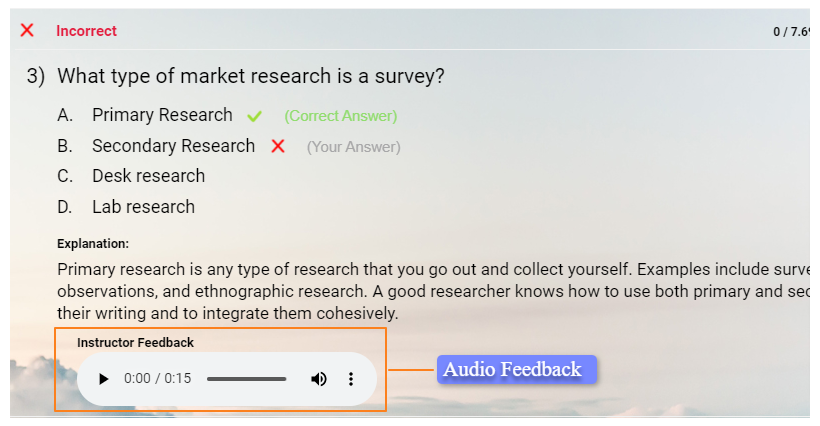
Provide specific, actionable feedback right after a performance-based assessment. This helps individuals understand their strengths and areas for improvement while the experience is still fresh.
Use a feedback sandwich approach—start with positive feedback, provide constructive criticism, and end with positive reinforcement.
Immediate feedback helps participants make timely adjustments and improvements.
- Document Everything
Keep detailed records of assessment results. Documentation helps track progress, identify trends, and make informed decisions about future assessments. Use digital tools to store and organize this information efficiently. Proper documentation & reporting also aid in accountability and transparency in the assessment process.
Watch: How to Review Quiz Reports & Statistics
- Engage Participants
Involve participants in the performance assessment process. Encourage self-assessments and peer assessments to provide a well-rounded evaluation. This fosters a sense of ownership and promotes self-reflection and peer learning. Engagement can lead to more accurate and comprehensive assessments.
- Use Technology
Use cutting-edge technology to elevate the efficiency and effectiveness of performance evaluation tests.
Performance assessment tools such as online quiz makers, video recording software, and digital submission platforms can greatly enhance both the administration and evaluation stages.
You can create more engaging and comprehensive performance assessments by leveraging diverse question formats supported by an online quiz maker.
- Audio Responses: Let assessment takers record audio to assess communication abilities, capturing nuances in tone and articulation.
- Video Responses: Request video submissions to gauge interaction skills, particularly how participants engage with customers or prospects.
- Interactive Video Tasks: Encourage learners to watch a demonstration video, pause to replicate the activity while recording themselves, and then upload their video response. This method is especially effective for practical skill assessments.
- Image Uploads: Enable graphic designers and other visual artists to upload their creations, assessing both their creativity and technical skills.
- Document Uploads: Allow participants to submit written works, such as research papers or articles, to thoroughly evaluate their research and writing capabilities.
Moreover, online quiz platforms support remote assessments, broadening access and making it easier for participants to engage from any location.
Watch: 15+ Question Types for Online Learning & Assessment
- Simulate High-Stakes Environments
For roles that involve high pressure, create assessments that simulate these conditions. This could include timed tasks or multi-step challenges that require quick thinking and problem-solving.
Simulating high-stakes environments helps prepare participants for real-world pressures and assesses their performance under stress.
For example, you could create a timed test in which customer support executives need to respond to customer complaints quickly and effectively.
Watch: How to Create a Timed Quiz
- Review & Revise
Regularly review and revise your assessment methods based on feedback and outcomes. Continuous improvement ensures that your assessments remain relevant and effective. Gathering feedback from both assessors and participants can highlight areas for enhancement, leading to more effective assessments over time.
Examples of Performance-Based Assessment Tasks
Here are some examples that illustrate the range and depth of performance assessments:
Short Tasks
- In-Class Writing Exercises: Quick prompts that require students to organize and express their thoughts on a topic within a class period.
- Short-Answer Tests: These tests evaluate students’ recall and understanding of key concepts through concise questions.
Extended Projects
- Real-World Problem Solving: Students tackle current issues by analyzing data and proposing viable solutions.
- Example: Developing a community plan to reduce plastic waste.
- Document Analysis Essays: Students examine and interpret literary or historical documents, crafting detailed essays showcasing critical thinking.
- Example: Analyzing the significance of the Declaration of Independence.
- Prototype Development: Students design and build models or devices to solve specific problems, demonstrating creativity and technical skills.
- Example: Constructing a bridge model to test engineering principles.
Creative & Technical Skills
- Art Projects: Creating original artworks allows students to demonstrate their artistic abilities and conceptual understanding.
- Example: Producing a painting on environmental themes.
- Technique Demonstrations: Students perform specific skills, such as in culinary arts or lab procedures, to show their proficiency.
- Example: Demonstrating precision knife skills in cooking.
Interactive & Collaborative Tasks
- Multimedia Presentations: Students use various media to create and present projects, enhancing their research and technical skills.
- Example: Presenting the impacts of World War II using slides, videos, and interactive elements.
- Software Development: Writing and debugging programs that meet specific requirements to showcase problem-solving and coding skills.
- Example: Developing a simple educational game or application.
- Physical Education Assessments: Engaging in sports or physical activities to demonstrate fitness and teamwork.
- Example: Playing a basketball game to exhibit skills and strategy.
- Debates: Structured debates where students articulate and defend their positions on controversial topics.
- Example: Arguing for and against renewable energy solutions.
Elevate Performance Assessments With Advanced Quiz Software
Performance assessments are crucial for evaluating real-world skills and competencies. Implementing these assessments effectively ensures individuals are well-prepared for their roles. Performance-based assessments lead to better learning outcomes and a more skilled workforce.
Online quiz maker software can enhance the assessment process, making it more efficient and comprehensive. Advanced quiz maker software allows responses in the form of recorded audio and video, as well as uploaded images or documents.
It also supports adding timers to questions and including images, videos, and documents within the questions themselves. These features enable the creation of robust performance assessments that evaluate and enhance participants’ skills and knowledge.
Integrating quiz tools into your assessment strategy ensures thorough, fair, and practical evaluations, ultimately driving greater success for your organization and the individuals you assess.
FREE. All Features. FOREVER!
Try our Forever FREE account with all premium features!


